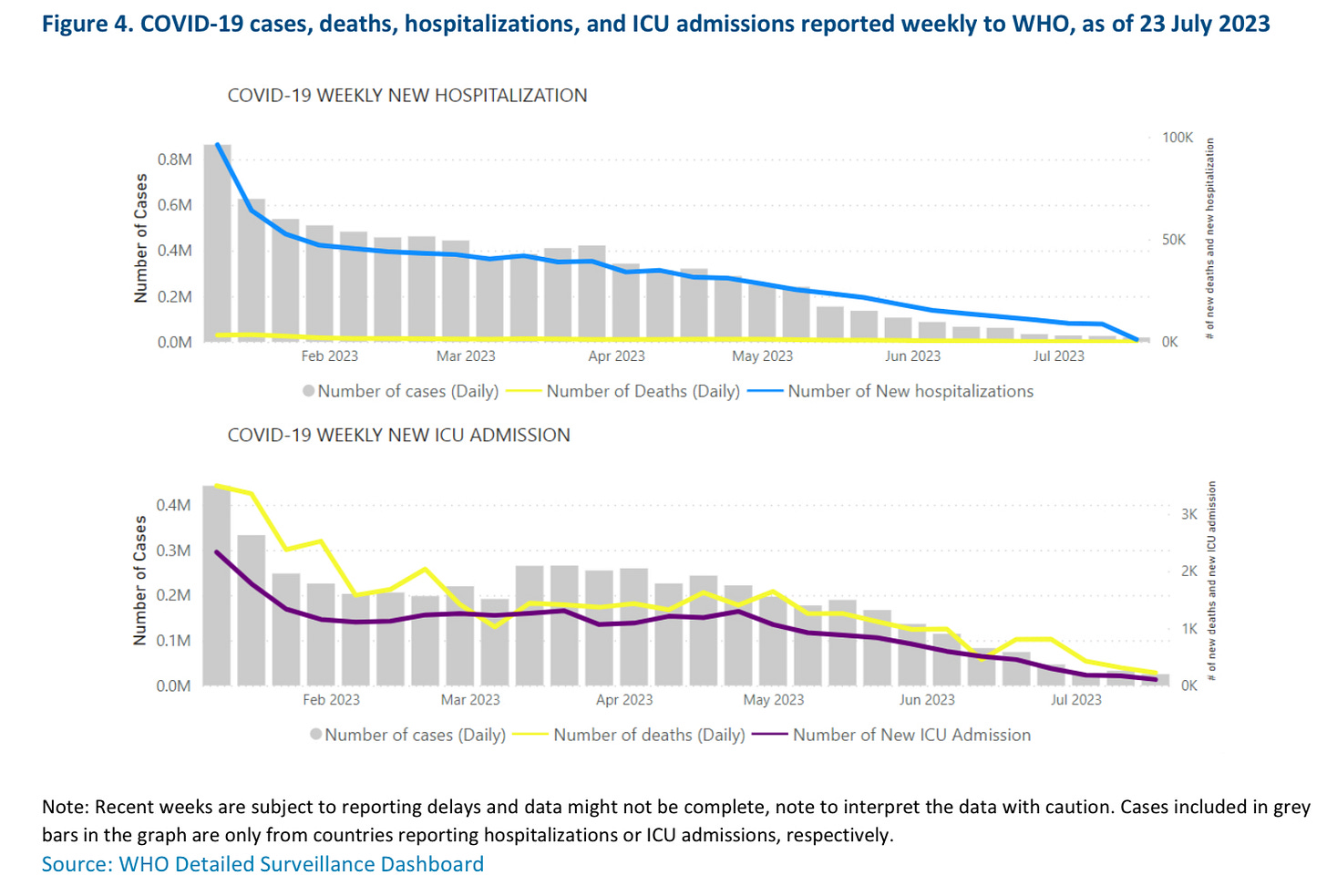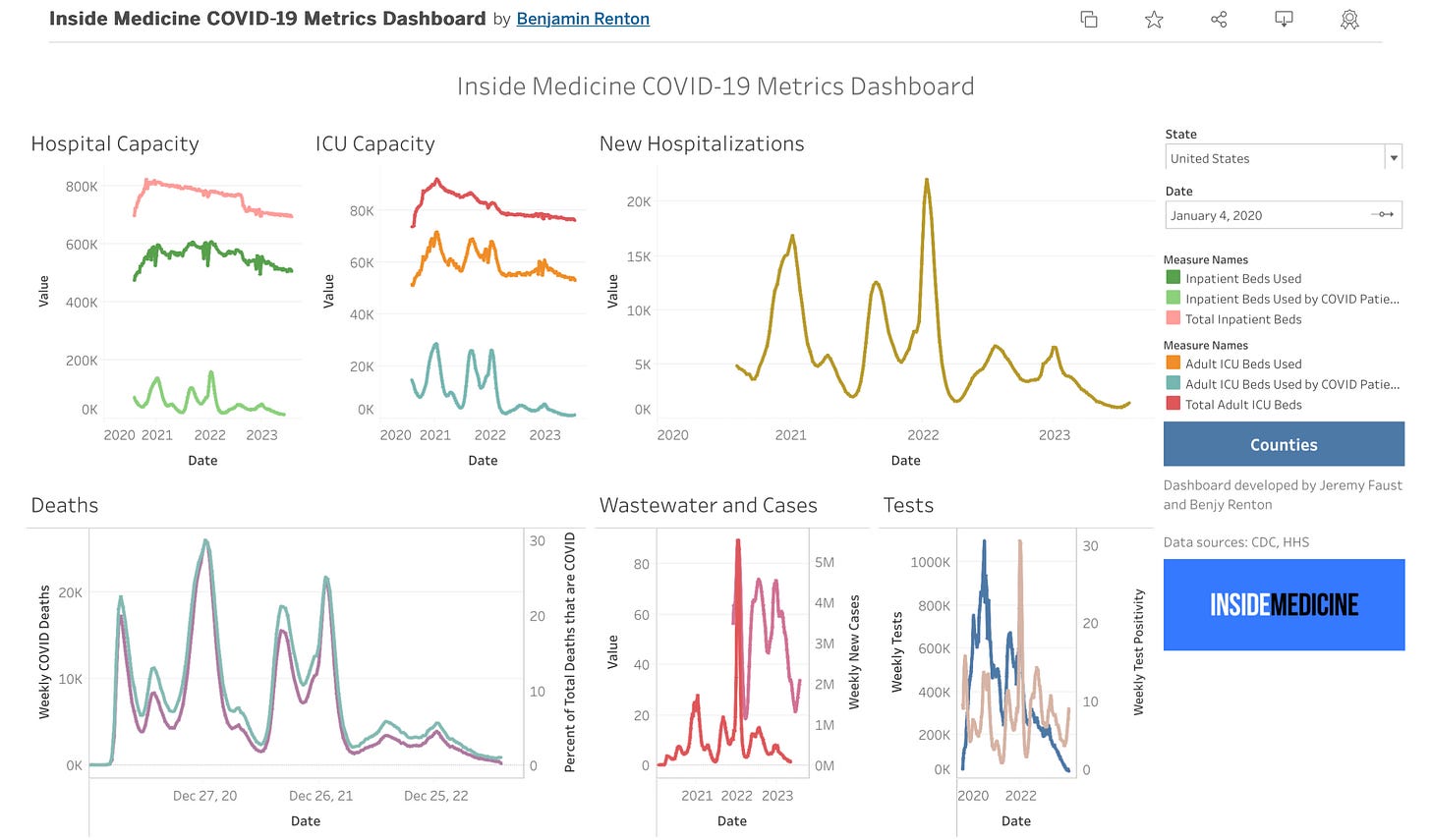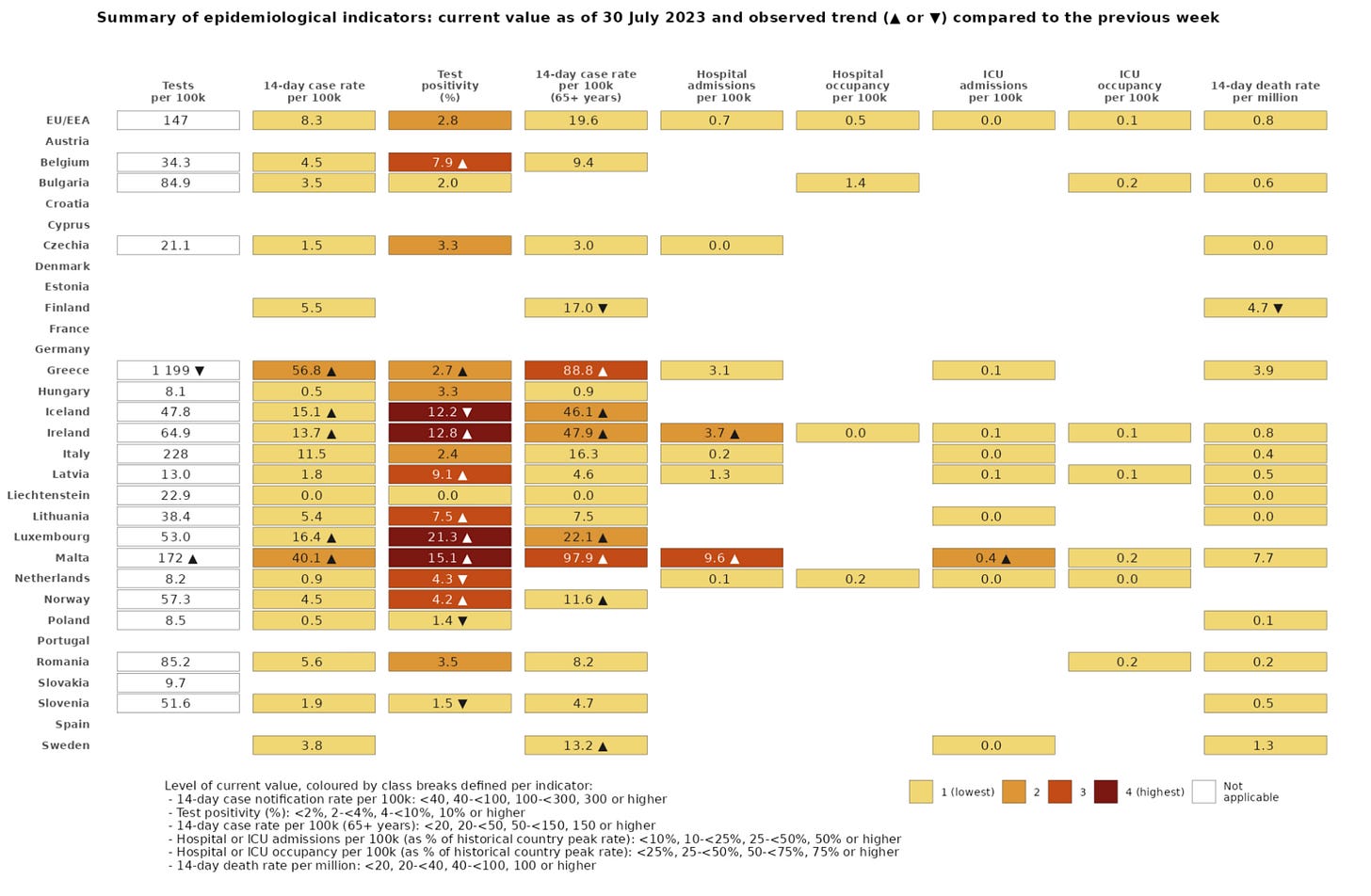🦠 🌎
The World Health Organization has designated a new coronavirus variant of interest, another Omicron sub-variant called EG.5.. The global health agency notes the new strain is spreading extremely fast. It says in about a month the global proportion of EG.5 related infections has grown at a torrid pace going from 7.6% to 17.4%. This is based on 7,354 positive sequenced test results confirmed to be the new strain. So far, EG.5 is known to be spreading in 51 countries including China, the United States, South Korea, Japan, Canada, Australia, Singapore, the United Kingdom, Portugal, France, and Spain.
WHO COVID Technical Lead Maria Van Kerkhove:
“In terms of its behavior. It has an increased growth rate. We don’t detect a change in the severity of EG.5 compared to other sub-lineages of Omicron. And we do see immune escape with this EG.5 sub-lineage. And in countries where we have seen more cases of EG.5 reported, we do see increases in case detection. We need to ensure that sequencing continues. The virus is evolving, the virus is circulating in every country.”
In its first risk assessment, issued on Wednesday, the WHO assesses the new variant as posing a low global health risk. But, it adds, that EG.5 could drive a new infection wave and potentially could become the new dominant global strain due to how hyper-infectious it is along with its ability to dodge around immune protections.
“While EG.5 has shown increased prevalence, growth advantage, and immune escape properties, there have been no reported changes in disease severity to date. While concurrent increases in the proportion of EG.5 and COVID hospitalizations (lower than previous waves) have been observed in countries such as Japan and the Republic of Korea, no associations have been made between these hospitalizations and EG.5.”
That said, the WHO cautions that due to significantly decreased global reporting that it has low confidence in its own assessment, the variant may not cause more severe infections. It says additional studies and research are needed to fill in some of these crucial knowledge gaps.
As with every other new COVID variant, there are a lot more questions than answers at the moment.
Here is what we know so far:
The variant was first reported on February 17, 2023.
The UK Health Security Agency assesses EG.5 as having the fastest growth rate among any currently circulating coronavirus strain.
The U.S. CDC estimates EG.5 to account for over 17.3% of all infections, and growing, in the United States as of August 5th.
The Public Health Agency of Canada says EG.5 has likely been circulating in the country since May. It estimates the new strain already makes up over 36% of all new infections as of August 5th.
The WHO says EG.5 has mutations associated with an increased ability to slip around immune protections but to what extent is still unknown.
In its latest global COVID situation report, the World Health Organization notes global infection numbers and virus deaths continue to decrease. But among individual countries, there are still some hot spots. South Korea is seeing infection numbers rise with over 750,000 new cases (+96%). Among the just 16 countries reporting hospitalization numbers, the United States is one of the few to see admissions increase (+0.2%).
The latest COVID dashboard for the USA.
In Europe, there appears to be signs of a potential uptick in coronavirus activity. In the latest snapshot from European Centre for Disease Prevention and Control Greece, Iceland, Ireland, Luxembourg, and Malta are reporting an increase in infection activity across all age groups. While Norway and Sweden are both reporting increasing cases among vulnerable seniors over 65. Denmark is not reporting any COVID data to the ECDC.
Further, eight countries (Belgium, Greece, Ireland, Latvia, Lithuania, Luxembourg, Malta, and Norway) are all reporting increases in the number of positive COVID tests.
Ireland is also seeing infection-related hospitalizations increase while Malta is reporting rising numbers of both general and intensive care virus admissions.
The new strain arrives at an awkward time with booster dose campaigns in many countries, including here in Denmark, not due to begin until October.






